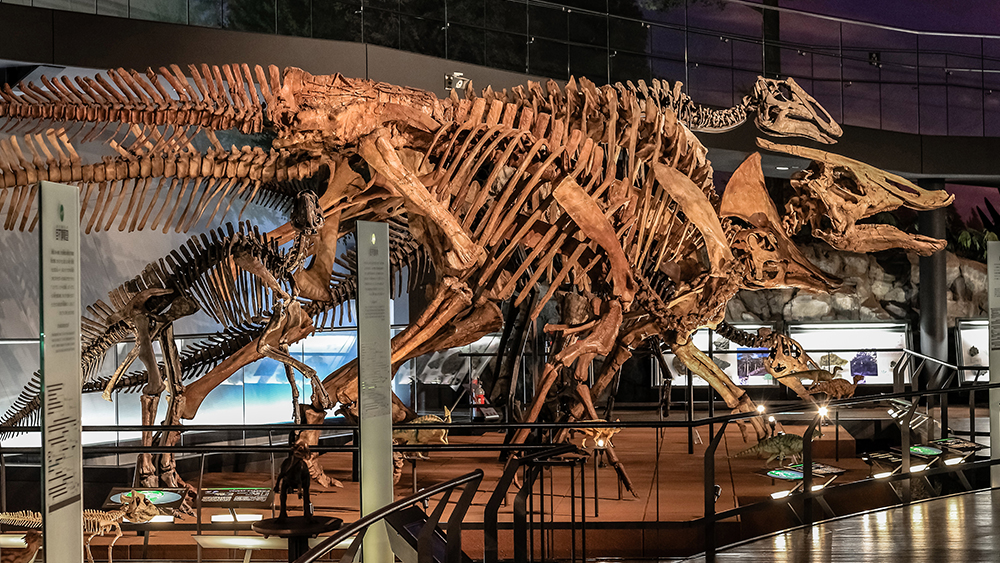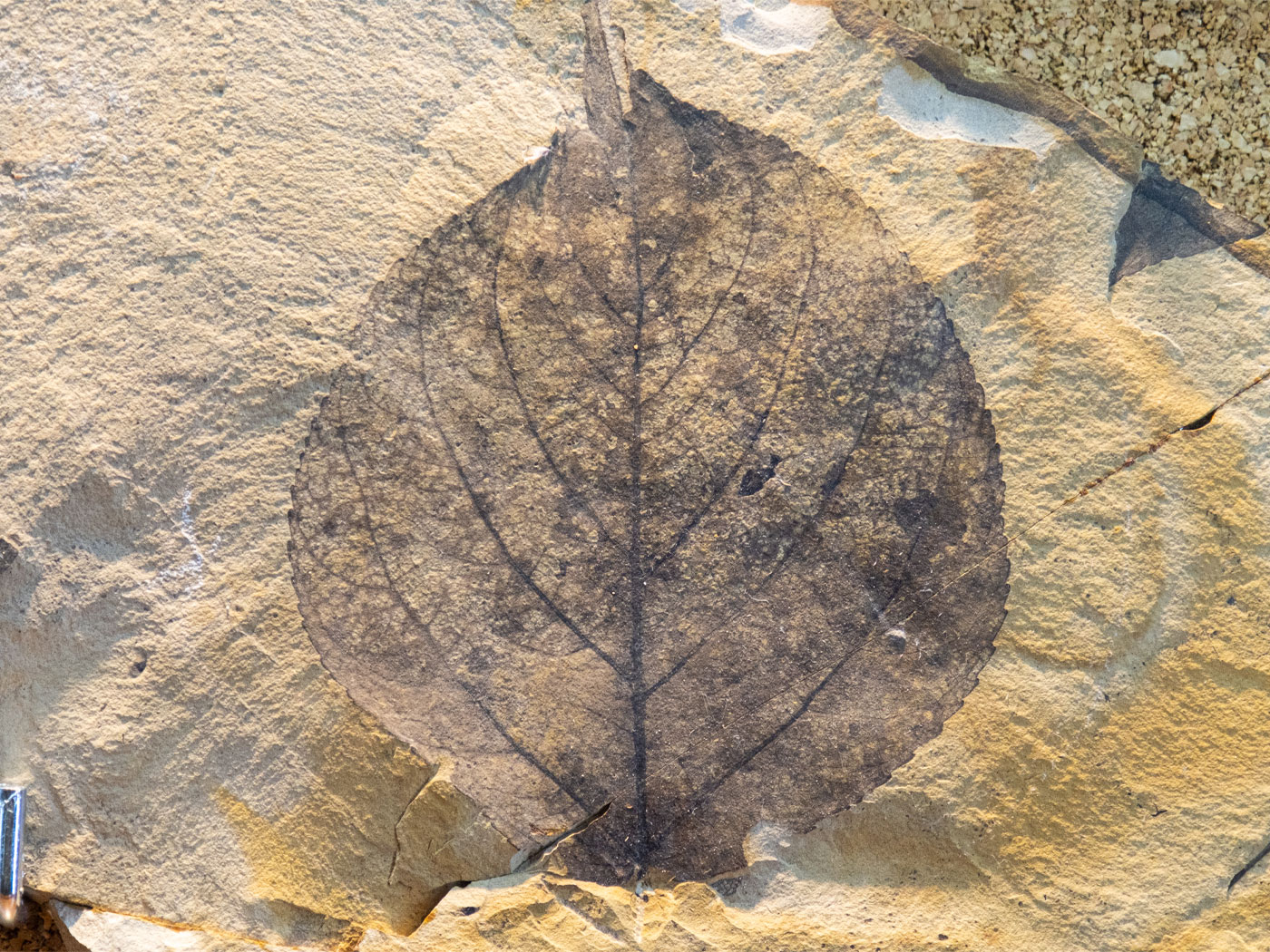Scientists claim to have discovered DNA-like molecules inside specialized cells taken from a type of duckbill dinosaur. Could it be actual dino DNA? Some paleontologists remain unconvinced, since DNA lasts only thousands of years before degrading, and dinosaur fossils are supposedly millions of years old. Do their objections make sense? The big picture of Earth history hangs in the balance.
Alida Bailleul at the Chinese Academy of Sciences in Beijing led the study, published in National Science Review.1 The report shows results from investigations into cartilage tissue from a Hypacrosaurus stebengeri skull.
They cut it open right where bone would have been growing. In young animals and people, new hard tissues start out as cartilage that grows from a leading edge of the bone called the growth plate. Specialized cells called chondrocytes craft new cartilage. As the bone matures, osteocytes replace that cartilage with bone.
The researchers, including famous paleontologists John (“Jack”) Horner and senior author Mary Schweitzer, first noticed how fresh the dinosaur skull bones looked. Excavated in the 1980s, the bones have lived in the collections at the Museum of the Rockies in Bozeman, Montana, where Mary learned paleontology from Jack decades ago. The team placed thin sections of dinosaur skull growth plate under the microscope. They saw what look like actual cells (chondrocytes). Some of those cells contained what look like DNA condensed into chromosomes.
The team used two techniques to investigate the possibility that the chromosome look-alikes might still consist of some remnant DNA, or at least some chemical with virtually the same properties as DNA. In one technique, the apparent chromosomes took up a DNA-specific stain called PI (propium iodide). Published images compared the dino chondrocytes to those in young emu skull growth plates. Chondrocytes from both species had what looked like condensed DNA inside them. The emu chromosomes absorbed more PI than the dino chromosomes.
In a second technique, the chromosomes absorbed another DNA-specific stain called DAPI (4’,6’-diamidino-2-phenyl iodide). Again, the fresh emu cells absorbed more stain, consistent with degraded—but still present—dino DNA.
The team also used multiple lines of evidence to demonstrate the presence of fresh cartilage, cells, and cartilage-specific biochemistry called Type II collagen.
It looks like chromosomes. It stains like chromosomes. It occurs within cells like chromosomes. Could it actually be dinosaur chromosomes? The team wrote,
Any problems? Yes! DNA cannot possibly preserve for millions of years. This claim is scientifically untenable.
The problem stems from the 75-million-year age assignment for the Two Medicine Formation—the sedimentary rock layers from which these fossils were extracted. Lab-bench studies that show DNA, under the best conditions, lasts a max of about 10,000 years.2 The authors themselves cite such studies. Does their adherence to millions of years force them to ignore this hard science of DNA decay?
Some would call Evan Saitta, with the Field Museum of Natural History in Chicago, a soft dinosaur tissue denier.3 He wrote in an email to the science blog website gizmodo,
These organic materials... are understood to be among the least stable biomolecules over long periods of time and under the heat of deep burial during fossilization. However, it is the extreme age of the samples that is striking. This 75-million-year-old fossil is, at least, one or two orders of magnitude older than the expected preservation limits of DNA and proteins.4
75,000,000 is 7,500 times longer than the max shelf life for DNA, assuming the molecule experienced today’s temperatures during Montana’s distant past. No wonder he and other paleontologists remain unconvinced that Bailleul and coworkers found actual dino DNA.
However, their objections vanish with the departure of 75 million years.
The gizmodo blog reads, “No genetic data has ever been recovered for dinosaurs.” Such a statement, like saying, “No scientist has ever been a creationist,” ignores facts. Just as 198 scientists openly expressed their trust in a literal Genesis,5 several reports have expressed evidence of unexpectedly old DNA, as this table shows.
| Author (Year) | Site | Identity | Journal |
|---|---|---|---|
| Woodward (1994) | Blackhawk Formation (Utah)* | Unidentified | Science6 |
| Yi (1995) | Xixia Henan | Dinosaur egg | Acta Scientarium Naturalium Universitatis Pekinesis7 |
| Vreeland (2000) | Salado Formation New Mexico | Halobacterium | Nature8 |
| Vreeland (2007) | Muribeca Formation, Brazil | Natronobacterium | Geomicrobiology Journal9 |
| Schweitzer (2013) | Hell Creek Formation, Montana | T. rex & B. canadensis | Bone10 |
| Kirkpatrick (2016) | Deep sea mud | n/a | Geology11 |
Now, we can include this new entry by Bailleul from the Two Medicine Formation for Hypacrosaurus. Bailleul told North Carolina State University, “It’s an exciting find that adds to the growing body of evidence that these tissues, cells and nuclear material can persist for millions—even tens of millions—of years.”12
Saitta was correct to expect “preservation limits of DNA”—limits that 75 million years wantonly overwhelms. But these various lines of evidence best fit actual dino DNA. One way both observations can coexist is to assign an age of thousands, not millions of years for these fossil samples.
One group says the laws of chemistry, through DNA-specific stains, helped them detect a chemical indistinguishable from dino DNA. They conclude the material lasted 75 million years. That group’s critics say there’s nothing to see here. They claim it’s not dino DNA at all, since DNA cannot last even half a million years (even if kept in a frozen vault) without suspending the laws of chemistry. Thus, laws of chemistry challenge both groups’ stance. All parties would find resolution by simply dropping the millions-of-years dogma.
Dinosaur DNA, like chondrocytes and type II collagen, fit with ease in a recent creation and with these fossils as remnants from Noah’s Flood.
References
1. Bailleul, A. M. et al. 2020. Evidence of proteins, chromosomes and chemical markers of DNA in exceptionally preserved dinosaur cartilage. National Science Review. 0: 1-8.
2. M. E. Allentoft et al. 2012. The Half-life of DNA in Bone: Measuring Decay Kinetics in 158 Dated Fossils. Proceedings of the Royal Society, B: Biological Sciences. 279(1748): 4724–4733.
3. See: Thomas, B. Skeptics Analyze Original Tissues with Lousy Logic. Creation Science Update. Posted on ICR.org June 28, 2019, accessed March 1, 2020.
4. Dvorsky, G. Paleontologists Are Skeptical About Baby Dinosaur Cells Supposedly Found in Fossil. Posted on gozmodo.com March 2, 2020, accessed March 3, 2020.
5. See: creation.com/creation-scientists.
6. Woodward, S. R., N. J. Weyand, and M. Bunnell. 1994. DNA Sequence from Cretaceous Period Bone Fragments. Science. 266 (5188): 1229-1232.
7. Yi, L. et al. DNA isolation and sequence analysis of dinosaur DNA from Cretaceous dinosaur egg in Xixia Henan, China. Acta Scientiarum Naturalium Universitatis Pekinensis. 31(2): 148-152.
8. Vreeland, R. H., Rosenzweig, W. D., and Powers, D. W. 2000. Isolation of a 250 million-year-old halobacterium from a primary salt crystal. Nature. 407:897-900.
9. Vreeland, R. H. et al. 2007. Isolation of Live Cretaceous (121-112 Million Years Old) Halophilic Archaea from Primary Salt Crystals. Geomicrobiology Journal. 24: 275-282.
10. Schweitzer, M. H. et al. 2013 Molecular analyses of dinosaur osteocytes support the presence of endogenous molecules. Bone. 52 (1): 414-423.
11. Kirkpatrick, J. B., E. A. Walsh, and S. D’Hondt. 2016. Fossil DNA persistence and decay in marine sediment over hundred-thousand-year to million-year time scales. Geology. 44 (8): 615–618.
12. Peake, T. Original Cartilage and Evidence of DNA Preserved in 75 Million-Year-Old Baby Dinosaur. NC State University News. Posted on news.ncsu.edu March 2, 2020, accessed March 2, 2020.
*Dr. Thomas is a Research Associate at the Institute for Creation Research and earned his Ph.D. in paleobiochemistry from the University of Liverpool. -->





















